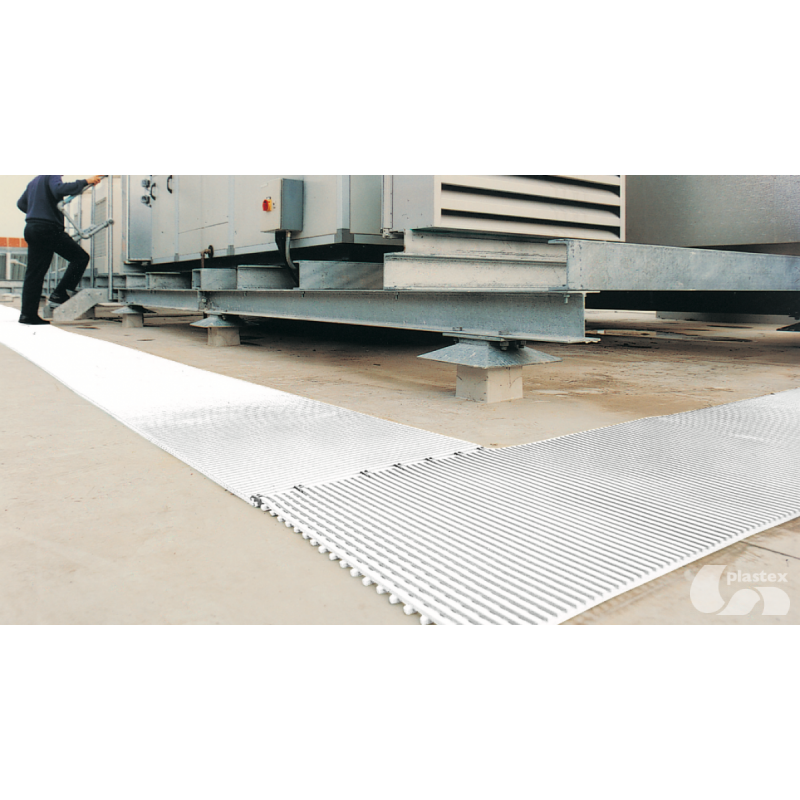










Protection against damage caused by foot traffic and falling tools and maintenance equipment on flat roofs.
Easy to install, with non-slip grip and wind resistance up to 89 km/h.
The ideal solution for flat roofs subject to heavy use. EPDM, TPO compatible.
More colors on request. 100% recyclable
Protective solution for flat roofs designed to withstand heavy foot traffic, falling tools and maintenance equipment.
Made from flexible TPO, it can be installed quickly and easily without fasteners, even in adverse weather conditions.
Durable grid construction adapts perfectly to the roof structure to protect the membrane, while the anti-slip structure of the upper crossbars ensures a firm grip underfoot.
Stable in winds of up to 89 km/h.
| CTP |
Data sheet
| Intensity of passage | Intense |
| Properties | Draining Non-slip |
| Composition | |
| Weight | |
| Fire classification | Dfl-s1 |
| Maintenance / Cleaning | |
| Intensity of use | Intense |
| Height | |
| Anti-slip classification | R9 |
| Acoustic insulation | |
| Reversion | |
| UV light | |
| Warranty | |
| Drainage capacity | V10 |
Industrial mats meet the needs of ergonomic workstations and employee well-being.
They prevent:
There are many uses for industrial mats:
Safety criteria: The mat must cover the entire workstation, be firmly attached to the floor, not shift or slide, and have bevelled edges to prevent falls.
Thickness and flexibility criteria: Contrary to what you might think, you shouldn't choose a very thick or very soft mat. The mat should have a certain elasticity, but still allow a comfortable standing position, without the user feeling slumped.
Environmental criteria :
Environmental hazard criteria : To establish more precise characteristics for a mat (antistatic properties or fire resistance etc...) we need to take into account the hazards present in the environment where the mat will be installed.
Where hazardous liquids are present in the working environment, the anti-slip properties and chemical resistance of industrial mats should be taken into account. The presence of openings on mats to allow the evacuation of fluids is essential.
Traffic criteria: We need to take into account the traffic that takes place on the equipment: how many workers can walk on it? How often, etc., in order to choose the most suitable mat.
Prevent the many problems associated with poor workstation ergonomics: RSI, static shock, bacterial proliferation, etc.
We offer a wide choice of industrial mats: on rolls, in standard sizes, made-to-measure or modular mats to suit all types of workstations.